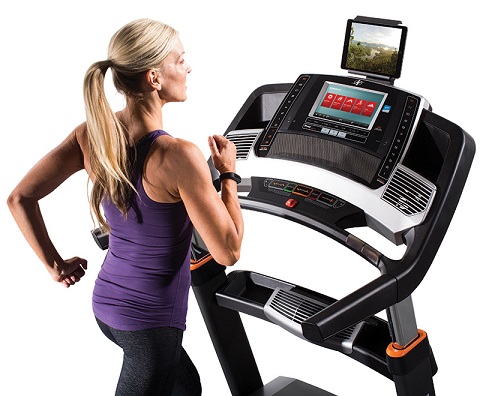 Getting in shape, and staying in shape, is tough. The time spent getting to and from the gym is time that drags on you and sucks away your enthusiasm. And let’s be honest about the realities of sweating in a room full of other people. It stinks. Literally. If you remove the health benefits from the equation, there is no way you would choose to be packed into a glaringly bright room to sweat with complete strangers. So like a lot of us, you have chosen to exercise in the comfort of your own home. No more commute time, no more waiting for your favourite cardio machine to be free, no more strange other people smells. But unless you have an abundance of free space in your home that you can dedicate to your exercise gear, the size and adaptability of your treadmill or other cardio equipment is a factor. Here’s an overview of the differing types of cardio equipment options and the space requirements that they’ll each have.
Getting in shape, and staying in shape, is tough. The time spent getting to and from the gym is time that drags on you and sucks away your enthusiasm. And let’s be honest about the realities of sweating in a room full of other people. It stinks. Literally. If you remove the health benefits from the equation, there is no way you would choose to be packed into a glaringly bright room to sweat with complete strangers. So like a lot of us, you have chosen to exercise in the comfort of your own home. No more commute time, no more waiting for your favourite cardio machine to be free, no more strange other people smells. But unless you have an abundance of free space in your home that you can dedicate to your exercise gear, the size and adaptability of your treadmill or other cardio equipment is a factor. Here’s an overview of the differing types of cardio equipment options and the space requirements that they’ll each have.
The Minimalist Solution
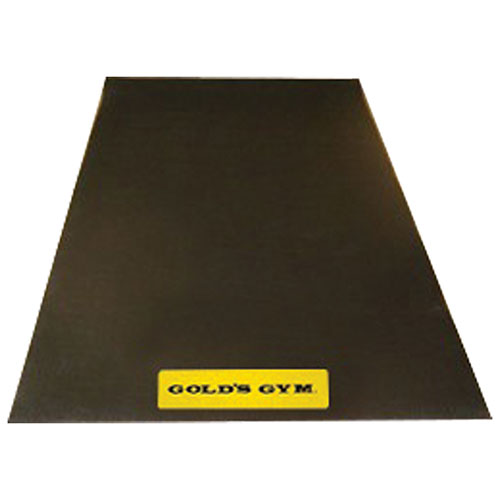 If you are really serious about hiding away your gear between workouts, then you should use the best multi-purpose piece of exercise equipment on the planet: your own body. Experiment with a variety of different exercise DVDs and find one that will fit your current level of fitness and your future aspirations. The Gold’s Gym Exercise Equipment Floor Mat will give you a stable surface with adequate traction to keep up the high intensity workouts, and will muffle some of the sound. After the workout, just roll up the mat and slip in behind the couch.
If you are really serious about hiding away your gear between workouts, then you should use the best multi-purpose piece of exercise equipment on the planet: your own body. Experiment with a variety of different exercise DVDs and find one that will fit your current level of fitness and your future aspirations. The Gold’s Gym Exercise Equipment Floor Mat will give you a stable surface with adequate traction to keep up the high intensity workouts, and will muffle some of the sound. After the workout, just roll up the mat and slip in behind the couch.
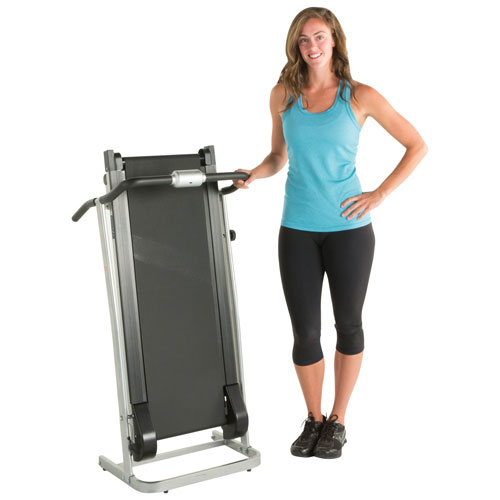 Small Treadmills
Small Treadmills
The nature of a treadmill’s design means that even the most compacting one will still be just as long folded up as it was fully extended. The running surface can’t be shortened. Having said that, a treadmill like the Progear 190 Space Saver Treadmill does its best. It folds down to a flat rectangle that stands just over 1.2 meters tall. It can be kept against the wall, hidden away behind a couch or rolled into a large closet.
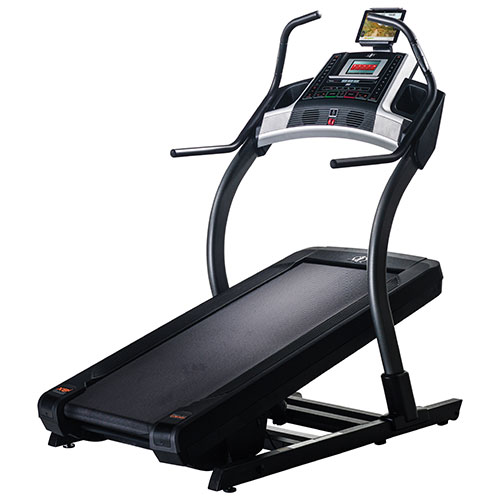
Large Treadmills
Any pretense on portability and compactness is done away with for models like the NordicTrack X9i Incline Trainer Treadmill. It’s big, it’s heavy, and it’s not going anywhere. This 177 kg beast will stay in the spot where you assemble it, so plan ahead or find some fit friends to help you move it later. On the plus side, when you give up on trying to keep it small and portable, you can add all sorts of bells and whistles. This particular treadmill has a pair of built in fans that automatically adjust to blow air at a speed that matches the speed that you’re running at (or you can manually set the airspeed).
Small Bikes
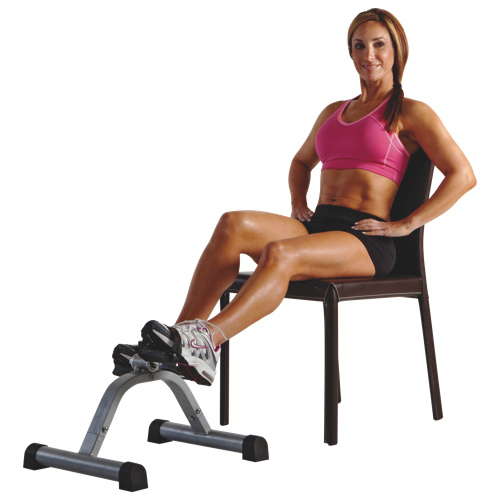 The Marcy Cardio Mini Cycle Table Bike is the most compact bike solution you can find. Weighing in at just under 4 kg, this device can be easily put in the closet between workouts. It can also be used on a table, using your arms instead of your legs. For a beginner with knee or foot issues, that feature alone makes this a good option. The downside of being lightweight and portable is that it has the potential to move about during high intensity use, which frustrates me.
The Marcy Cardio Mini Cycle Table Bike is the most compact bike solution you can find. Weighing in at just under 4 kg, this device can be easily put in the closet between workouts. It can also be used on a table, using your arms instead of your legs. For a beginner with knee or foot issues, that feature alone makes this a good option. The downside of being lightweight and portable is that it has the potential to move about during high intensity use, which frustrates me.
Medium Bikes
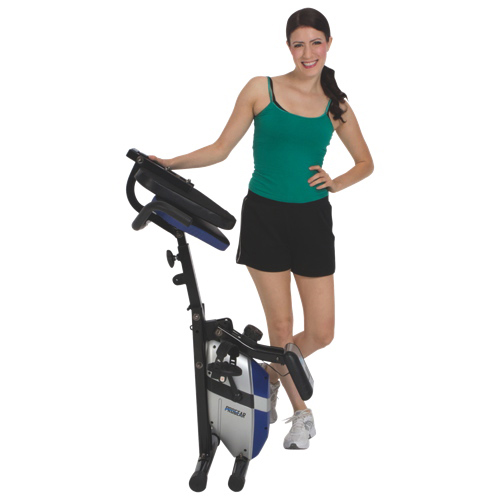 The ProGear 190 folding Recumbent Bike is an example of bike that compromises between being completely hidden and permanently present. When not in use, the bike folds up to stand vertically and takes up about half the size it normally occupies. You’d be able to fit it into a mostly empty closet, but hauling the 17kg bike to and from the storage space may be more than you’re willing to do regularly. It’s more likely that it would sit in the corner of the room until exercise time rolls around again.
The ProGear 190 folding Recumbent Bike is an example of bike that compromises between being completely hidden and permanently present. When not in use, the bike folds up to stand vertically and takes up about half the size it normally occupies. You’d be able to fit it into a mostly empty closet, but hauling the 17kg bike to and from the storage space may be more than you’re willing to do regularly. It’s more likely that it would sit in the corner of the room until exercise time rolls around again.
Large Bikes
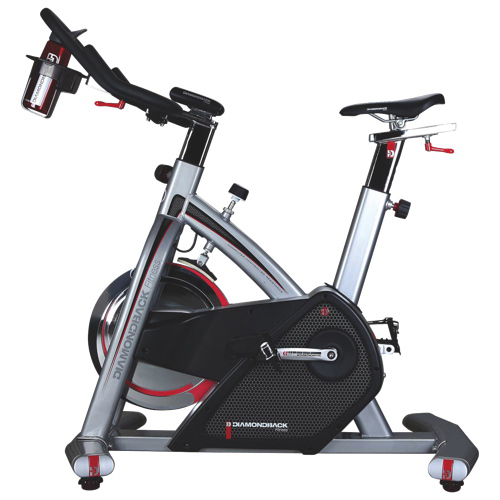 Most of the bikes that will continue to meet your needs as you improve your fitness level will fall into this category. The rigid frames and added weight from the flywheels will give you durability and a better simulation of road riding, but will also keep you from changing the bike’s location. The Diamondback Fitness 910iC Exercise Bike is a good example of heavy duty exercise bike, with emphasis on the heavy. It weighs in at over 65kg.
Most of the bikes that will continue to meet your needs as you improve your fitness level will fall into this category. The rigid frames and added weight from the flywheels will give you durability and a better simulation of road riding, but will also keep you from changing the bike’s location. The Diamondback Fitness 910iC Exercise Bike is a good example of heavy duty exercise bike, with emphasis on the heavy. It weighs in at over 65kg.
Rowing Machines
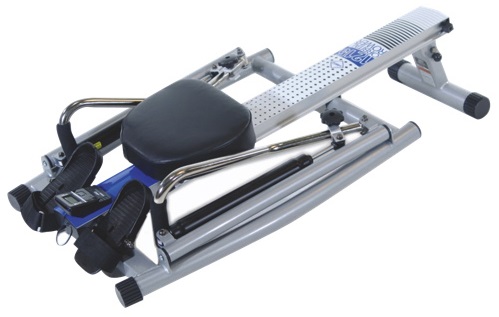 Rowing machines are also limited in how compact they can be. The Stamina Orbital Hydraulic Rowing Machine is an example of the most compact models. It folds down to a somewhat flat square that can be slipped under a bed or leaned against a wall in the corner to keep it out of the way when not in use. Most rowing machines will offer some kind of folding frame or wheels to facilitate moving it, but the area needed for storage is very close to the area needed for use.
Rowing machines are also limited in how compact they can be. The Stamina Orbital Hydraulic Rowing Machine is an example of the most compact models. It folds down to a somewhat flat square that can be slipped under a bed or leaned against a wall in the corner to keep it out of the way when not in use. Most rowing machines will offer some kind of folding frame or wheels to facilitate moving it, but the area needed for storage is very close to the area needed for use.
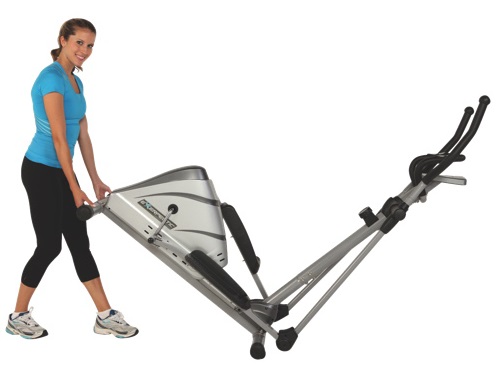 The nature of elliptical machines makes them inherently non-compact. The basic structure of the device takes up a fair amount of room, and there aren’t many components that can easily be folded down or moved temporarily out of the way. The best option for a small exercise space is to choose an elliptical machine that is light and has wheels to allow it to be moved more easily, like the Exerpeutic 1301 Air Elliptical Machine.
The nature of elliptical machines makes them inherently non-compact. The basic structure of the device takes up a fair amount of room, and there aren’t many components that can easily be folded down or moved temporarily out of the way. The best option for a small exercise space is to choose an elliptical machine that is light and has wheels to allow it to be moved more easily, like the Exerpeutic 1301 Air Elliptical Machine.
Summary
There are many different choices you can make when you look at a home cardio solution, ranging from the tiny to the massive. Before you go ahead with your purchase, take a good hard look at how you’ve prioritized your decision. The most portable and compact models of each type of machine have those attributes at the expense of additional features and increased capacity. The user weight limit for the more portable devices is always lower than the more durable models. So if you are really intending to put in the hard work and sustained effort to get in shape, make sure your equipment has the features and durability to stay with you for the long haul.
Image from Nordictrack.ca



